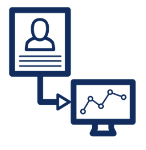Leveraging Real-Time Data Providers to Enhance Underwriting Accuracy in P&C and Life Insurance
The insurance industry has seen a remarkable transformation in recent years, with data playing a pivotal role in accelerating underwriting processes. As carriers increasingly push for accelerated underwriting and instant decisions, there has been a similar push for real-time datasets to enable this digital underwriting transformation. Real-time data enables them to make more informed decisions when underwriting P&C and life insurance policies online. In this article, we will explore some of the top data providers that are helping the insurance industry enhance underwriting accuracy, ultimately benefiting both insurers and policyholders.
Part 1: Real-Time Data Providers for Property and Casualty (P&C) Insurance
In the property and casualty sectors, an accurate assessment of risk is paramount. Data providers offer valuable resources to insurers to enhance underwriting accuracy and streamline policy pricing. Here are a few of the most common real-time data providers:
- LexisNexis Risk Solutions is a prominent provider of data-driven solutions for P&C insurance. For example, they offer access to the Comprehensive Loss Underwriting Exchange (CLUE), which is a database that contains information about insurance claims related to property and casualty insurance. Carriers use this to evaluate the claims history of a property or a person seeking insurance coverage. In addition, insurers utilize LexisNexis data sources to gain insights into policyholders’ risk profiles, enabling them to set premiums more accurately and expedite the underwriting process.
- Verisk Analytics is another key player in the P&C sector. They provide a diverse array of data and analytics solutions and are one of the most commonly used data providers in the P&C space. For example, their telematics data is invaluable for auto insurance carriers. Telematics data offers insights into driver behavior, such as speed, braking patterns, and location, allowing insurers to personalize premiums based on individual driving habits.
- CoreLogic is renowned for its property data and analytics, which are essential for home insurance underwriting. Their property information includes details about a property’s construction, location, and environmental risk factors. This data assists insurers in pricing policies accurately and managing potential losses.
- TransUnion offers a wide range of data, from credit reports to criminal history and vehicle information. Insurers rely on this data to assess applicants’ risk profiles and establish appropriate premiums for auto and property insurance policies.
- ForMotiv is a Behavioral Data Science company that measures real-time digital behavioral data during the application process and offers a variety of insurance-specific purchase intent, risk, fraud, and underwriting solutions. Their Premium Leakage Solution leverages their one-of-a-kind behavioral dataset and finds cases of premium leakage and misrepresentation in the digital underwriting process. Premium Leakage, or the loss of revenue due to policyholders not paying their full insurance premium and misclassifying information, has grown to be a $35 billion problem in the P&C space. ForMotiv’s Solution enables carriers to act on risky or malicious behavior in real-time to prevent premium leakage and reduce risk.
- Hazard Hub, now owned by Guidewire, offers “the most comprehensive set of property risk data, casualty risk data, and hazard risk scoring in the P&C insurance industry. Insurers use our data to underwrite faster, underwrite more accurately, and improve pricing.”
- Motor Vehicle Records (MVR): Motor vehicle records contain vital information about applicants, like their name, date of birth, and driver’s license number. MVR also includes any motor vehicle events they’ve had, including traffic citations, license suspensions, DUI convictions, and accident reports. This dataset is
- Driving History: Similar to motor vehicle records, detailed driving history can help underwriters assess the risk associated with an applicant’s driving behavior and whether they engage in high-risk activities on the road.
Part 2: Real-Time Data Providers for Life Insurance
In the life insurance sector, data providers offer specialized information critical for assessing an individual’s health, longevity, and overall risk, which are essential factors in policy underwriting.
- MIB Group specializes in life and health insurance data. They maintain a database of medical information, enabling life insurance carriers to evaluate an applicant’s health history. This data is vital for assessing the risk associated with providing life insurance coverage.
- Experian, known for its credit reporting services, also provides crucial data for life insurance underwriting. Credit history plays a significant role in determining life insurance premiums. Insurers use Experian’s data to evaluate an individual’s creditworthiness, which can be indicative of their likelihood to pay their premium on time.
- HumanAPI – The Human API platform ingests and structures fragmented health data from every health data source – including EHR networks, HIEs, patient portals, pharmacies, labs, and offline retrieval partners – to deliver normalized data outputs that enable underwriting innovation.
- ForMotiv – Carriers use ForMotiv’s real-time Nondisclosure Solution to find cases of nondisclosure and material misrepresentations during the digital underwriting process. Nondisclosure, or the failure to disclose relevant information when applying for a policy, such as smoking status or medical history, is a multi-billion-dollar problem for life insurers. ForMotiv’s Solution leverages digital behavioral data and allows carriers to identify and prevent net new underwriting risks that would not be found using other 3rd party data sources.
- LexisNexis – LexisNexis’s Risk Classifier advanced risk assessment solution gives underwriters a robust view of life insurance customers without invasive application requirements. It utilizes attributes from public records, driving history, and credit, which is distilled into a numeric risk score so you can triage and make better-informed accelerated underwriting decisions.
- Verisk’s EHR Automation Engine evaluates more than 50 risk elements and 95,000 impairments to process applicant-authorized EHRs in one minute or less. And new medical note analytics powered by NLP can deliver insights to help life insurers rate complex risks more efficiently.
- Medical Records and Health History: Underwriters review an applicant’s medical records and health history to assess their overall health and identify any pre-existing conditions. This information is crucial in determining the risk of a policyholder experiencing health-related issues or premature death.
- Prescription Drug History (Rx): Prescription drug history provides insights into an applicant’s current and past medication usage. It can help underwriters understand chronic conditions, lifestyle choices, and potential health risks associated with certain medications.
Benefits of Utilizing Real-Time Data Providers in Underwriting
- Enhanced Accuracy: Data-driven underwriting allows insurance companies to assess risk more accurately, resulting in fairer premiums and reduced adverse selection.
- Improved Efficiency: Access to comprehensive data enables carriers to streamline the underwriting process, reducing the time it takes to issue policies.
- Personalization: Insurers can tailor policies to individual policyholders based on their unique risk profiles, leading to more customer-centric offerings.
- Reduced Fraud: Data providers assist in fraud detection, helping insurers identify and mitigate fraudulent claims.
In Summary
In the evolving landscape of insurance, data providers are invaluable for underwriting accurate P&C and life insurance policies. These data sources empower carriers to better understand and assess risk, streamline the underwriting process, and offer more personalized policies. As technology continues to advance, data providers will play an increasingly pivotal role in the future of insurance underwriting, driving improved accuracy, efficiency, and customer satisfaction in the industry.






